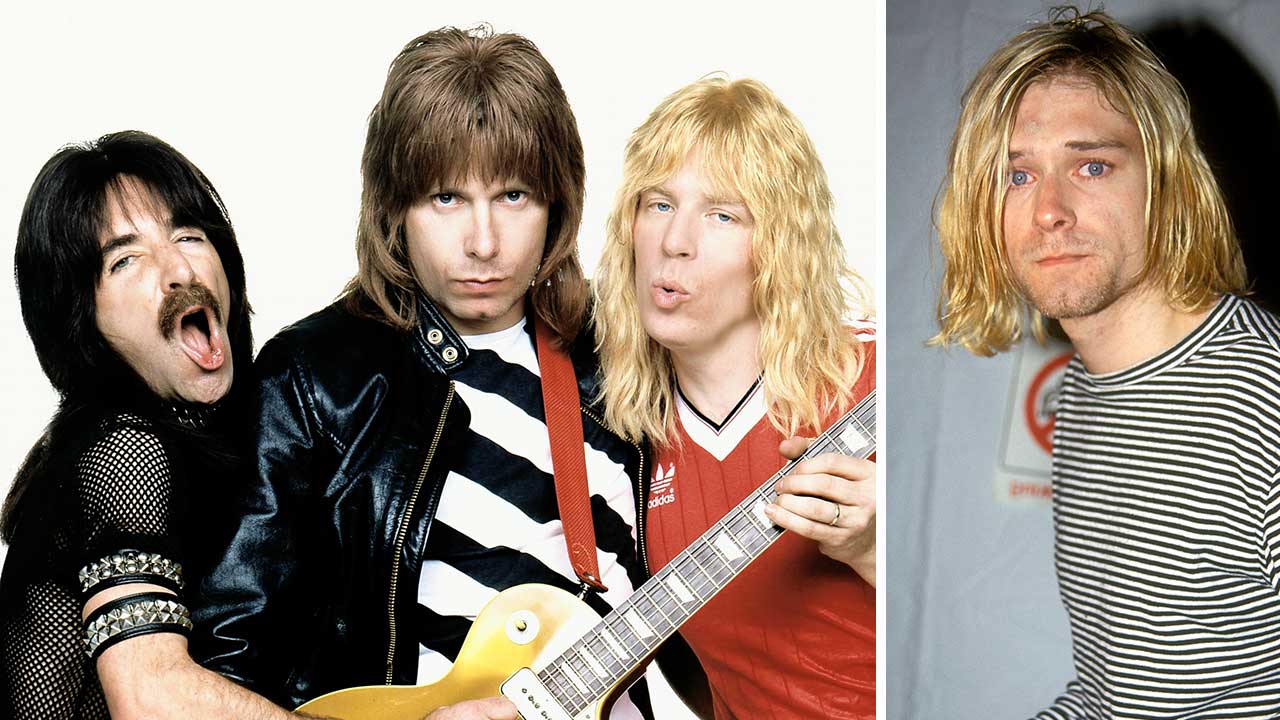In 1992, Kurt Cobain's excitement at the prospect of Spinal Tap reforming led him to dream up some outlandish stage props which could turn future Nirvana live shows up to 11
When Spinal Tap alleged themselves to be the key inspiration behind a little band called Nirvana, it got Kurt Cobain considering a Stonehenge moment all of his own

As Nirvana toured the world in the aftermath of Nevermind’s success, everybody wanted a piece of the trio. Kurt Cobain, Krist Novoselic and Dave Grohl arrived Down Under for an Australian tour in 1992 battered and bruised from a gruelling year on the road in which they’d become rock superstars. This mammoth success had not been on the agenda whilst recording their now-classic second record, as Cobain told Select’s Jessica Adams. “It didn’t seem that much different than the Bleach album at the time that we were recording,” he said. “We just went into the studio every day and tried our best.”
Their best had been good enough – perhaps as Cobain saw it, too good. The frontman was not in good shape during their first and last Australian jaunt, skipping interviews and record company meet and greets and eventually cancelling a few shows because of what the label put down to stomach problems.
But he did find the time to talk to Adams, who put it to him that fictional rockers Spinal Tap were claiming that their last Seattle gig had a huge influence on Nirvana. He took it well. “Well, that’s a pretty egotistical thing to say,” he said. “Actually, I’m really excited about them re-forming. They played their last performance in Seattle some years ago and some friends of mine found the skull they had as a prop. Now they have it in their room.”
This prompted Kurt to muse on how Nirvana might expand their own stage set-up beyond three blokes standing there and playing some of the most startlingly exciting live music in rock history. The answer, Kurt said, was a “20-foot hypnotic wheel”. And some fancy video screens: “We’re going to have a projection of the first video game they ever had,” he said. “But at the moment there’s nothing theatrical that we could think of, besides using dancers and something like that. Maybe we could throw in a brass section.”
Unfortunately, none of this came to pass. Nirvana never did have a video screen based on Atari games, or dancers, or, umm, a brass section. And Kurt never got to speak to Spinal Tap about their claims of influence. Maybe, though, he secretly agreed.
The latest news, features and interviews direct to your inbox, from the global home of alternative music.
Niall Doherty is a writer and editor whose work can be found in Classic Rock, The Guardian, Music Week, FourFourTwo, Champions Journal, on Apple Music and more. Formerly the Deputy Editor of Q magazine, he co-runs the music Substack letter The New Cue with fellow former Q colleague Ted Kessler. He is also Reviews Editor at Record Collector. Over the years, he's interviewed some of the world's biggest stars, including Elton John, Coldplay, Radiohead, Liam and Noel Gallagher, Florence + The Machine, Arctic Monkeys, Muse, Pearl Jam, Depeche Mode, Robert Plant and more.

